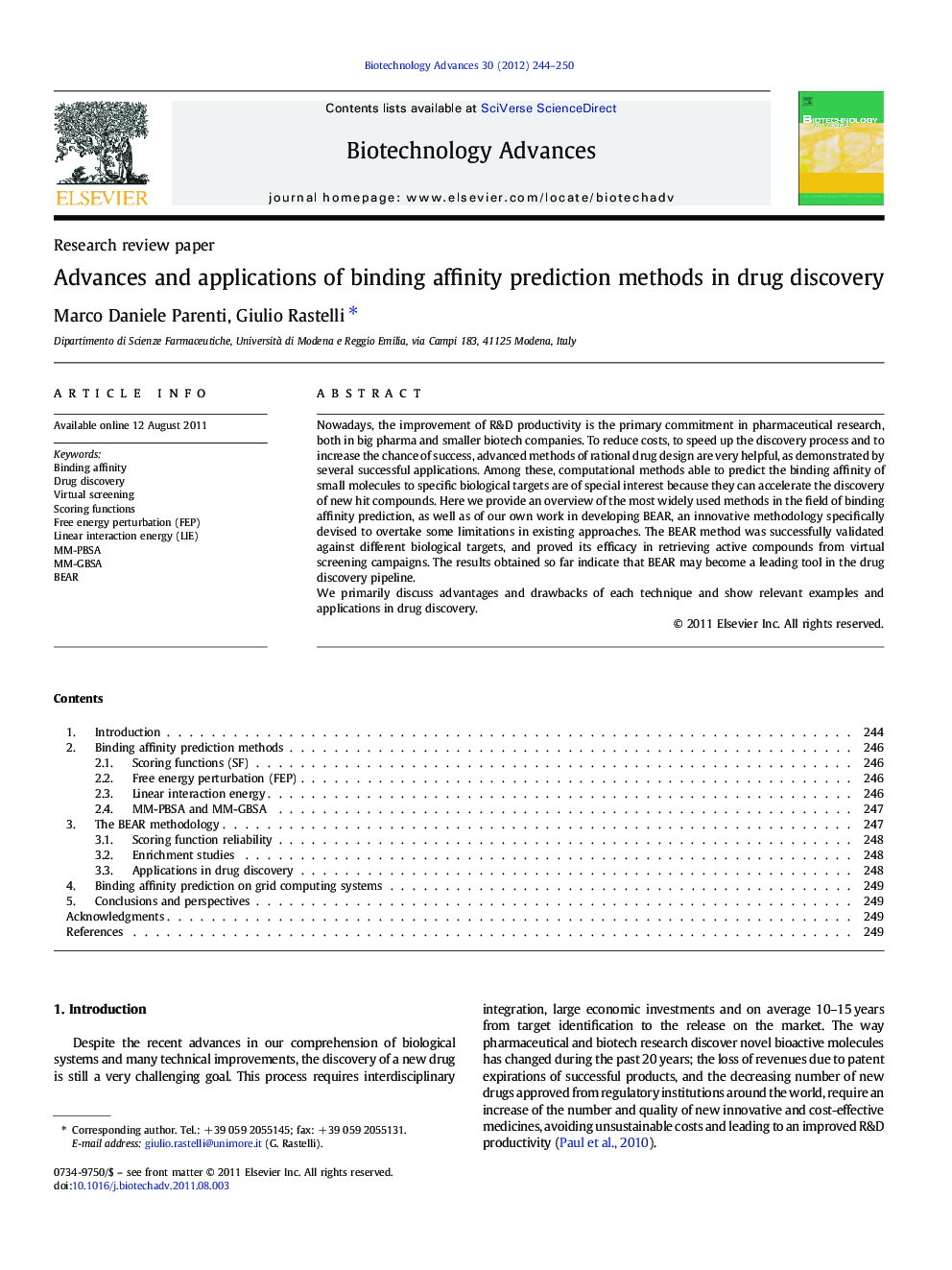| Article ID | Journal | Published Year | Pages | File Type |
|---|---|---|---|---|
| 14599 | Biotechnology Advances | 2012 | 7 Pages |
Nowadays, the improvement of R&D productivity is the primary commitment in pharmaceutical research, both in big pharma and smaller biotech companies. To reduce costs, to speed up the discovery process and to increase the chance of success, advanced methods of rational drug design are very helpful, as demonstrated by several successful applications. Among these, computational methods able to predict the binding affinity of small molecules to specific biological targets are of special interest because they can accelerate the discovery of new hit compounds. Here we provide an overview of the most widely used methods in the field of binding affinity prediction, as well as of our own work in developing BEAR, an innovative methodology specifically devised to overtake some limitations in existing approaches. The BEAR method was successfully validated against different biological targets, and proved its efficacy in retrieving active compounds from virtual screening campaigns. The results obtained so far indicate that BEAR may become a leading tool in the drug discovery pipeline.We primarily discuss advantages and drawbacks of each technique and show relevant examples and applications in drug discovery.
